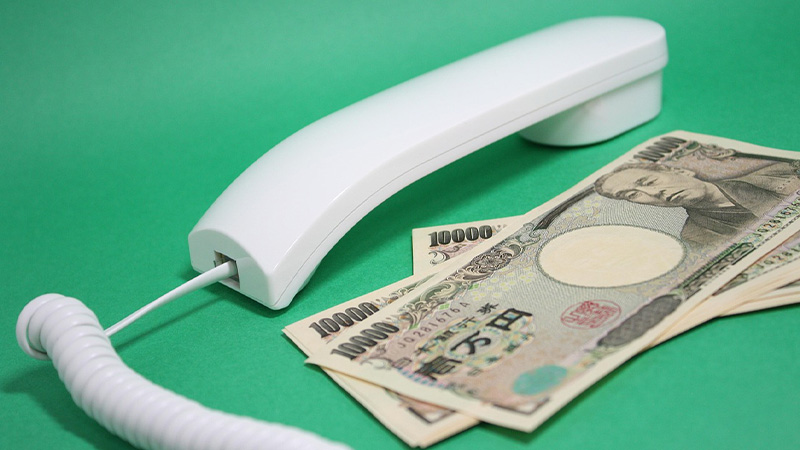
Ultima Markets App
Trade Anytime, Anywhere
Important Information
This website is managed by Ultima Markets’ international entities, and it’s important to emphasise that they are not subject to regulation by the FCA in the UK. Therefore, you must understand that you will not have the FCA’s protection when investing through this website – for example:
- You will not be guaranteed Negative Balance Protection
- You will not be protected by FCA’s leverage restrictions
- You will not have the right to settle disputes via the Financial Ombudsman Service (FOS)
- You will not be protected by Financial Services Compensation Scheme (FSCS)
- Any monies deposited will not be afforded the protection required under the FCA Client Assets Sourcebook. The level of protection for your funds will be determined by the regulations of the relevant local regulator.
Note: Ultima Markets is currently developing a dedicated website for UK clients and expects to onboard UK clients under FCA regulations in 2026.
If you would like to proceed and visit this website, you acknowledge and confirm the following:
- 1.The website is owned by Ultima Markets’ international entities and not by Ultima Markets UK Ltd, which is regulated by the FCA.
- 2.Ultima Markets Limited, or any of the Ultima Markets international entities, are neither based in the UK nor licensed by the FCA.
- 3.You are accessing the website at your own initiative and have not been solicited by Ultima Markets Limited in any way.
- 4.Investing through this website does not grant you the protections provided by the FCA.
- 5.Should you choose to invest through this website or with any of the international Ultima Markets entities, you will be subject to the rules and regulations of the relevant international regulatory authorities, not the FCA.
Ultima Markets wants to make it clear that we are duly licensed and authorised to offer the services and financial derivative products listed on our website. Individuals accessing this website and registering a trading account do so entirely of their own volition and without prior solicitation.
By confirming your decision to proceed with entering the website, you hereby affirm that this decision was solely initiated by you, and no solicitation has been made by any Ultima Markets entity.
I confirm my intention to proceed and enter this website Please direct me to the website operated by Ultima Markets , regulated by the FCA in the United KingdomIn today’s globalized economy, fluctuations in currency exchange rates constantly draw widespread attention.
Recently, the depreciation of the Japanese yen has attracted widespread interest. Whether you are planning a cherry blossom trip to Japan, seeking forex investment returns, or preparing to study in Japan, everyone is asking the same question: is it worth exchanging yen now?
This article will analyze the latest 2025 yen exchange rate trends and provide practical currency exchange advice for different types of users.
Recent Yen Exchange Rate Trends
Since the beginning of 2025, the yen exchange rate has undergone several rounds of fluctuation. Recently, the yen-to-CNY rate has shown some volatility—for example, on June 25, 100 yen was worth 4.9481 Chinese yuan. Over a longer time frame, the yen has depreciated significantly in recent years.
Take five years ago as a reference: back then, it took 6.6 CNY to exchange for 100 JPY. Now it only takes 4.9 CNY, reflecting nearly a 35% depreciation. This sharp devaluation has made Japan one of the most cost-effective overseas travel destinations.
If you’re interested in the yen but prefer long-term observation, using a demo account is recommended.

Factors Influencing the Yen Exchange Rate
Japan’s Domestic Economic Data
GDP decline: In Q1 2025, Japan’s real GDP fell 0.2% quarter-on-quarter and 0.7% on an annualized basis. With weak domestic consumption and negative external demand contributions, the risk of economic recession has increased pressure on the yen to depreciate.
Inflation and unemployment: Core CPI rose 3.2% year-over-year in March, marking the 43rd consecutive monthly increase, yet domestic inflationary momentum remains weak. Although the unemployment rate remains low, the overall economic climate has made the Bank of Japan cautious in its rate hikes, affecting the yen’s trajectory.
Monetary and Fiscal Policy
Monetary policy adjustments: In January, the Bank of Japan raised rates by 25 basis points to 0.50%, and kept them unchanged in May. It is also pursuing quantitative tightening by planning to reduce bond purchases. However, volatility in the bond market poses a dilemma. Although rate hikes are generally positive for the yen, limited economic growth restricts its upside potential.
Rising fiscal deficit: Japan’s FY2025 budget reached a record JPY 115.54 trillion, with government bonds issued to fill the gap. While large-scale spending may stimulate the economy, debt risk has shaken market confidence in the yen.
Global Factors
As a safe-haven currency, the yen is often favored during global recessions or trade tensions. When the US dollar strengthens, the yen typically weakens, showing a clear inverse relationship.

Currency Exchange Strategies for Different Groups
Tourists
For travelers planning a trip to Japan, due to the frequent fluctuations in the yen exchange rate, it is advisable to exchange currency in batches in the short term. You may convert part of your yen upfront based on your travel budget to lock in some of the costs.
For example, if your travel budget is 500,000 yen, consider exchanging 200,000 yen first and then decide whether to exchange more based on subsequent rate movements. This way, even if the rate fluctuates later, you won’t bear excessive costs from converting the full amount at once.
When spending in Japan, look for merchants that accept UnionPay or other payment methods. Take advantage of promotional offers across different payment channels to reduce expenses further.
Investors
For investors optimistic about the yen’s future performance, now may be a good time to allocate funds into yen-denominated assets such as yen bonds or ETFs tracking yen-related indices. However, forex investments are high-risk, and the yen’s value is influenced by various complex factors with considerable medium- to long-term uncertainty.
Therefore, a diversified asset allocation strategy is essential—do not overly concentrate funds in yen-based investments.
For instance, limit yen assets to around 10%–20% of your total portfolio and closely monitor global economic conditions, Bank of Japan policy updates, and market sentiment to adjust your strategy accordingly.
Students and Long-term Residents
If you expect long-term yen usage—such as for studying or relocating to Japan—it is recommended to adopt a “phased buying” strategy.
Use financial tools with rate alert functions to purchase yen when it reaches your target level. You may also consider forward contracts or other forex tools to lock in exchange rates in advance, avoiding the risk of increased study or living expenses due to large rate swings.
However, before using such instruments, be sure to understand their mechanisms and risks thoroughly. Consult a professional financial advisor if needed.

Japanese Yen Outlook: Will It Continue to Depreciate?
There is much speculation regarding whether the Bank of Japan will end its negative interest rate policy. If the BOJ raises interest rates, it would attract capital back to Japan, thereby supporting the yen.
From a technical perspective, the yen may have short-term rebound potential, as indicators show an oversold status following sustained depreciation. However, in the medium to long term, its trend will largely depend on the BOJ’s policy direction and the state of global economic recovery.
Financial institutions hold different views. Bloomberg analysis suggests that if the U.S. economy continues to weaken and the Federal Reserve speeds up rate cuts, the yen may appreciate. Nomura, on the other hand, emphasizes that the strength of Japan’s domestic recovery will be the key factor; if the data fails to improve significantly, the yen could remain under depreciation pressure.

FAQ
Q: Is this the yen’s historical low? Is now a good time to exchange?
A: While the yen is currently near historical lows, financial markets are inherently unpredictable, making it difficult to confirm if this is the absolute bottom. To mitigate exchange rate risk, a phased currency exchange strategy is recommended to gradually accumulate yen.
Q: What is the most cost-effective way to exchange yen?
A: Generally, online brokers or professional forex platforms offer lower fees and more real-time rates than banks, which can help reduce costs. However, always check for regulatory compliance and security when choosing such platforms—prioritize reputable, regulated ones where you can instantly open a trading account.
Q: What if the yen continues to depreciate—will I lose money?
A: If the yen is used for travel or living expenses, depreciation has limited real impact, since spending occurs in Japan—more yen per unit of home currency translates into greater purchasing power. However, if used for investment, asset values fluctuate with the yen. In that case, it is advisable to set stop-loss levels and manage capital carefully to control potential losses.
Conclusion
If you’re planning to travel to Japan or have upcoming yen expenditures, the current low level of the yen makes now a potentially favorable time for currency exchange.
For investors, the yen’s trend is subject to various factors and uncertainties. It’s essential to closely monitor policy shifts and exchange rate developments to avoid losses from abrupt market swings.
Disclaimer: This content is provided for informational purposes only and does not constitute, and should not be construed as, financial, investment, or other professional advice. No statement or opinion contained here in should be considered a recommendation by Ultima Markets or the author regarding any specific investment product, strategy, or transaction. Readers are advised not to rely solely on this material when making investment decisions and should seek independent advice where appropriate.












